Product Launch: Noho Move Chair with Obo
It is not often that we have the opportunity to experience a brand new product at the same time as discussing it with the brand’s Executive Director!
Today I’m comfortably sat on the Noho Move chair ‘which brings a new kind of comfort to everyday life with its unique versatility and dynamic, earth-friendly design that enriches your home, your well-being and our planet’ in order to ask Noho Executive Director, Richard Cutfield, all about the chair’s ergonomic and sustainable credentials.
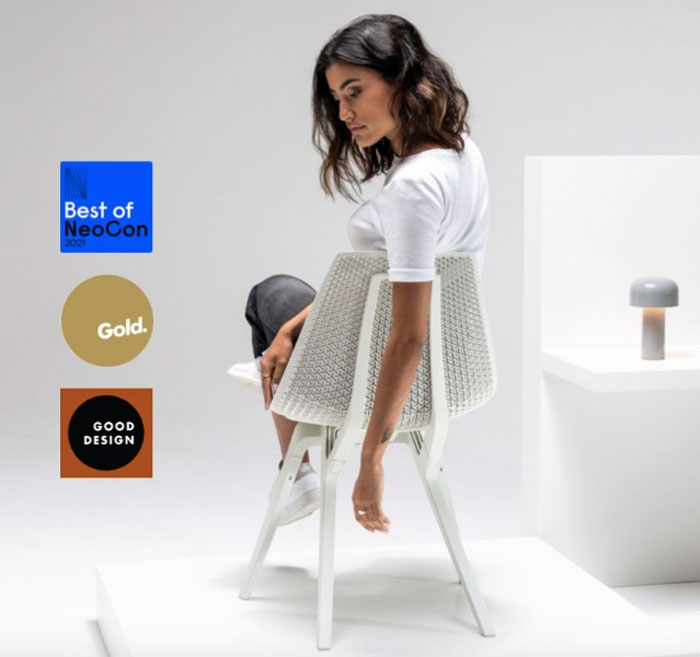
Richard, maybe we could begin today if you could introduce yourself and Noho as well as your relationship with obo?
Kia ora (hello) Alys and thanks for the opportunity. I lead the Noho life enriching furniture business. We’re part of the Formway Group and they are the designers of all our products. We created the Noho brand to bring a new breed of Formway designed table chair to the world, as well as other Formway designed products. Formway isn’t very well known in the UK, but for 30 years we’ve been designing and licensing designs for brands including Knoll. We focused on performance seating and some of your readers will know the Life chair and Generation by Knoll, ReGeneration by Knoll, MultiGeneration, and the Remix chairs which are all ranges that Formway has designed for Knoll over the last 30 years.
The Noho Move chair is the latest design by Formway and something that we felt warranted us creating a brand to take to market ourselves and really represent the values of the Formway design studio and the Noho business.
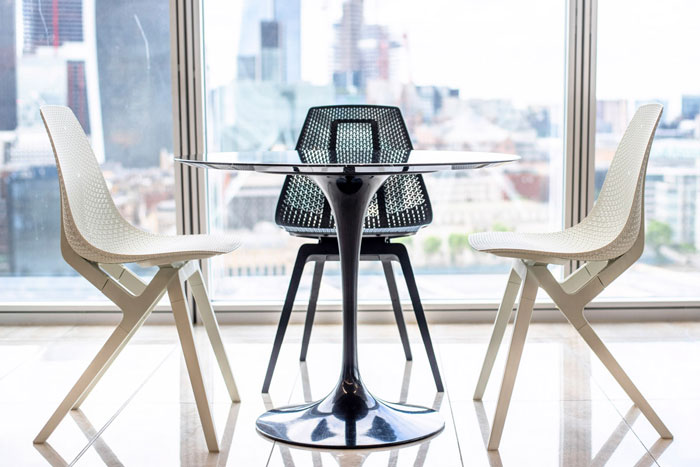
obo ‘collaborate with like-minded, equally passionate experts to deliver holistic workplaces which deeply support and encourage the emotional and physical wellbeing of those who use them.’ The Noho brand is a fantastic fit with obo isn’t it?
Noho and obo have a wonderful alignment in values, sharing an holistic approach to health and wellbeing in the office environment and our joint concern for sustainability. It’s also a perfect match in terms of our product aspirations, we are passionate about products that are fundamentally better for people, both in terms of the physiology and function, and achieving this in a way that’s kind as possible to the environment.
A sustainable approach has been a really important part of the Formway values for 30 years, since we designed the Life chair and now we really wanted to dial that up and bring that into our business in a really meaningful way.
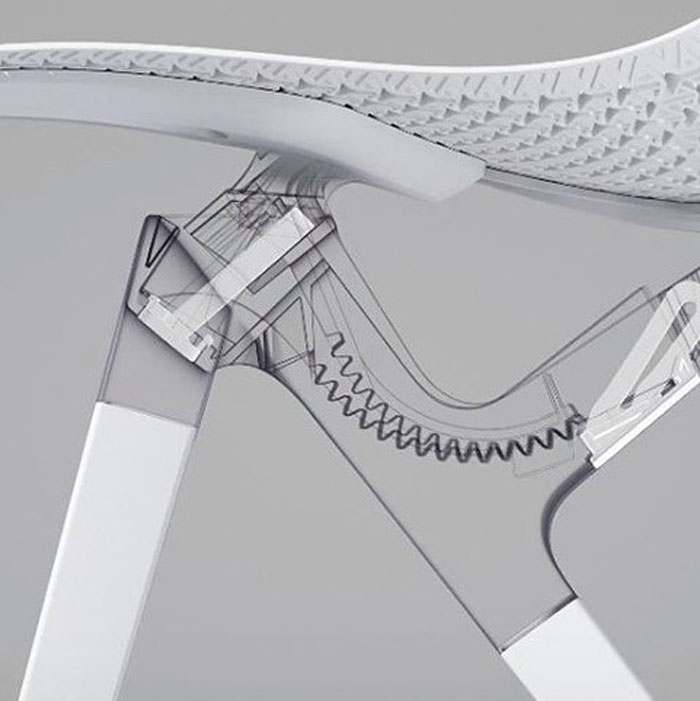
By collaborating with wellbeing experts, like-minded and forward-thinking partners, obo are able to offer an additional level of service, to create genuine improvements in the workplace and generate sustainable benefits to all. It’s really exciting to be here today because through obo the Noho Move chair is brand new to the UK. In a nutshell, why should commercial interior designers be as excited as I am about this chair?
We’ve created healthy seating for tables and resolved it in a beautiful, sustainable, form. As a designer, being able to specify a product that’s not only beautiful but is better for people and their health and wellbeing, is really positive.
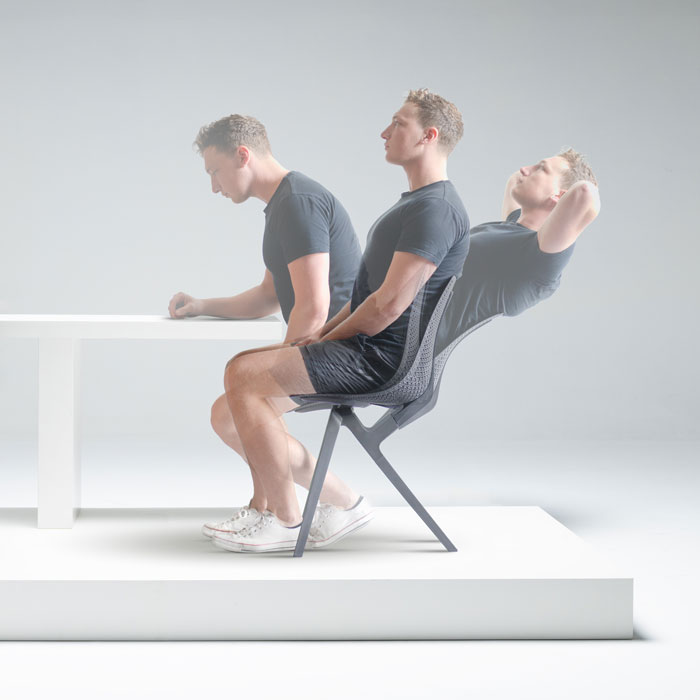
As I sit so comfortably here today on my Noho Move chair, what are the specific design details which are making this chair so comfortable?
Comfort is key to our design approach on a health and wellbeing basis. Comfort is effectively the absence of discomfort, and discomfort is the body’s way of telling you something that is not good for you. So health, wellbeing and comfort, in our minds, go hand in hand!
Fundamental to creating healthy comfort is promoting movement and relieving pressure points, creating flexible surfaces and addressing thermal control. The Noho Move chair breathes, it’s auxetic pattern of its seat shell molds with the body, but it allows air flow which prevent you from getting cold shock when you sit in this chair or heat build up.
How do you achieve that movement within the form of the chair?
There are three key elements that create a fluid movement. The first is the rocking mechanism which enables 12 degrees of movement into a forward active position. The rocking mechanism is soothing, and we’ve found when we deliver a dynamic chair it liberates the user to continually move.
The second aspect is the chair’s flex. The flex of the back structure enables you to lean back and open out the body, and then it follows you as you move forward.
The third element is the shell. It’s a self-supporting seat structure which has an auxetic pattern with a four way stretch.
The ‘recline-flex’ combines with the ‘forward-tilt’ to deliver a uniquely fluid motion and ergonomic support, which importantly supports the postures we adopt when we’re sitting at tables.
Achieving these high levels of comfort is part of creating healthy seating and this is something that you are really passionate about, isn’t it?
Yes, absolutely. We are made to move and its when we sit still that we encounter problems. We wanted to encourage movement as the primary goal and then support that movement in an ergonomic way.
For instance, when you lean forward it’s very easy to tuck your legs in under the chair and the front of the chair peers away which relieves the pressure under the thighs which encourages an open posture to take pressure off the organs, encourage blood flow and circulation.
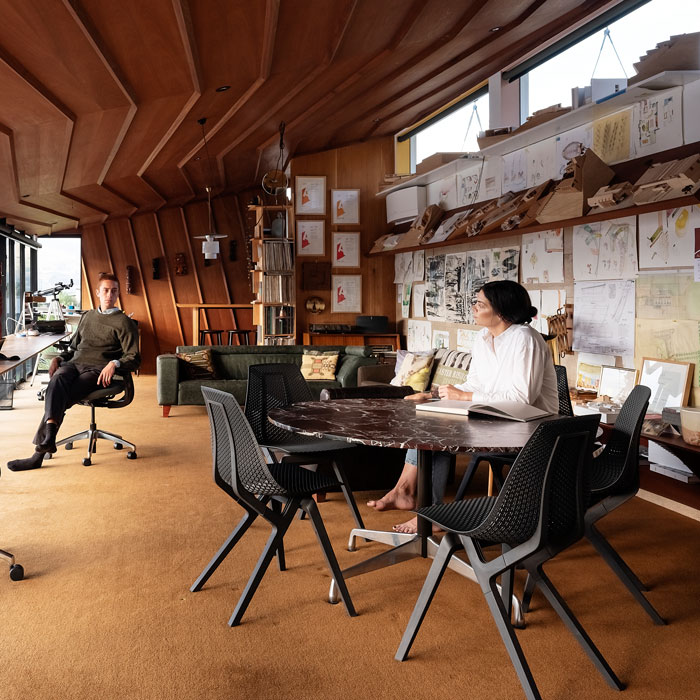
Before we move on to discuss the Noho Move chair’s sustainable credentials, I would like to ask a little bit more about the settings in which this chair has been designed to be used in and why, in particular, is it suitable for commercial spaces?
Originally it was designed with a focus on the dining table, and a lot of our research was around that. But what we discovered when we researched the dining room is that less than 20% of what we do at our dining tables is dining; it’s truly a multipurpose surface. You’re not only eating, you’re meeting, you’re working from home, you’re working on kids’ homework projects, playing board games, crafts, etc. A similar variety of activities take place around tables in our offices. It’s really important to support all activities that happen at the table.
Noho Move is for any table setting where you want healthier seating that works for the various activities you do. We have supplied them for board rooms, small meeting rooms, a meeting table in someone’s office. It’s a great hotel chair, in terms of desking and eating.
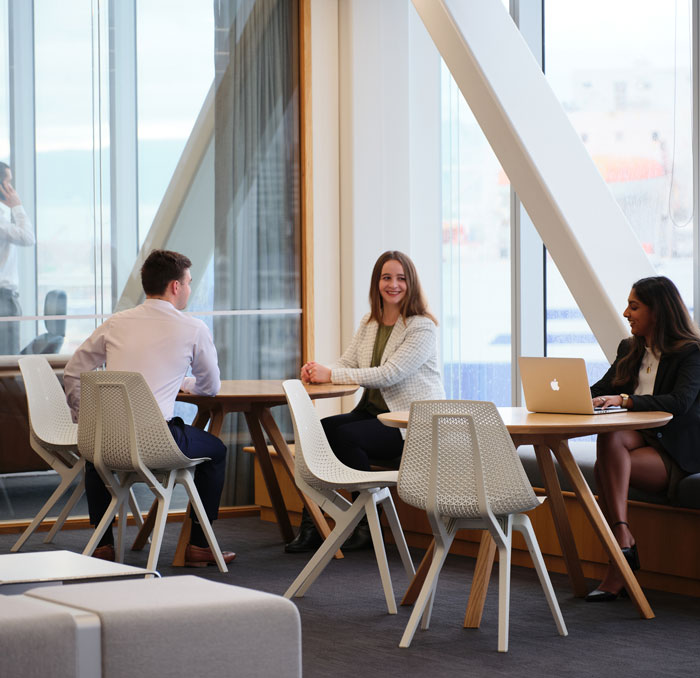
It’s interesting that you’ve mentioned that, because I was just going to ask whether there was a place in the hospitality sector as well as the workplace sector for the Noho Move chair.
There are many hotels, business hotels, you stay in where the chair provided is not a great desk chair and it’s not a great dining chair. Move answers both briefs as well as the brief for video conferencing, seminars and training room seating.
In the office environment we are seeing a trend towards a residential feel, a more relaxed environment and fewer adjustments on a task chair. In environments where you’ve got multiple people using the same chair, and it’s not your own chair adjusted to you, you want a chair that you can sit in which responds to your body shape, body weight, and works for you but then also works for the next user.
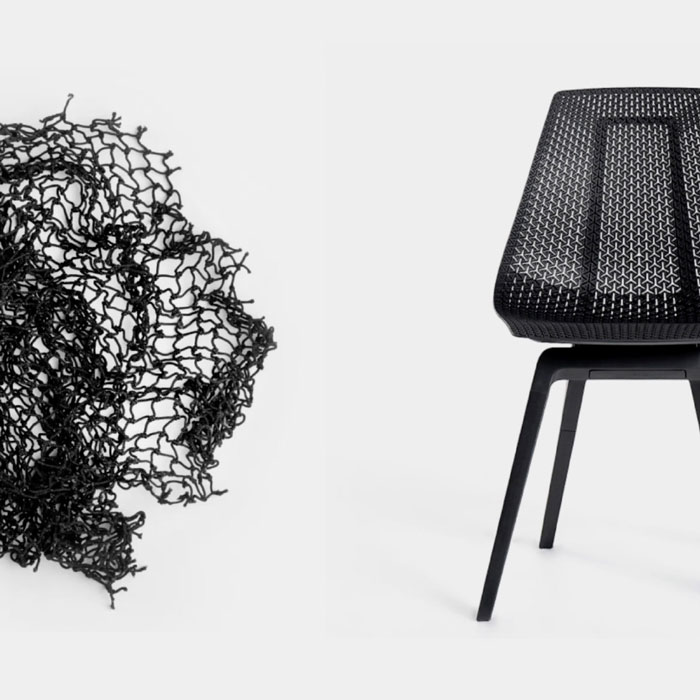
The commercial sector is consistently pushing to achieve higher and higher sustainable standards. The Noho Move chair doesn’t offer any greenwashing and has amazing sustainable credentials, I’d love to ask you about that in more detail, perhaps you could start with telling me more about the design’s material selection.
The first thing you can do for sustainability is design your products to last for a lifetime and we tried to create a timeless aesthetic, but that does limit your material choices to deliver on performance.
Using polymers or plastics was an obvious thing to do and we really looked hard for the most sustainable way to do it. 98% of the plastic in the chair is from regenerated materials.
The real heroes are our suppliers. We discovered an amazing material supplied by Aquafil, an Italian company, called ECONYL™ nylon. We are the first furniture manufacturer to work with them to pioneer the use of the product for injection molding for furniture.
ECONYL™ is sourced from recycled carpet, fabric fibre and reclaimed fishing nets retrieved from the ocean as part of the Healthy Seas Programme which they sponsor. The material is re-polymerized and reconstituted, so it has the mechanical properties of virgin nylon, but is in an infinitely recycled loop.
We add glass fiber to ECONYL™ for strength and durability and Aquafil are already engaged in the next challenge, which is to create the ability to recycle our glass filled nylon. The Aquafil team have already completed a successful pilot and are now in the process of scaling that up. This is going to have implications far beyond what we are doing!
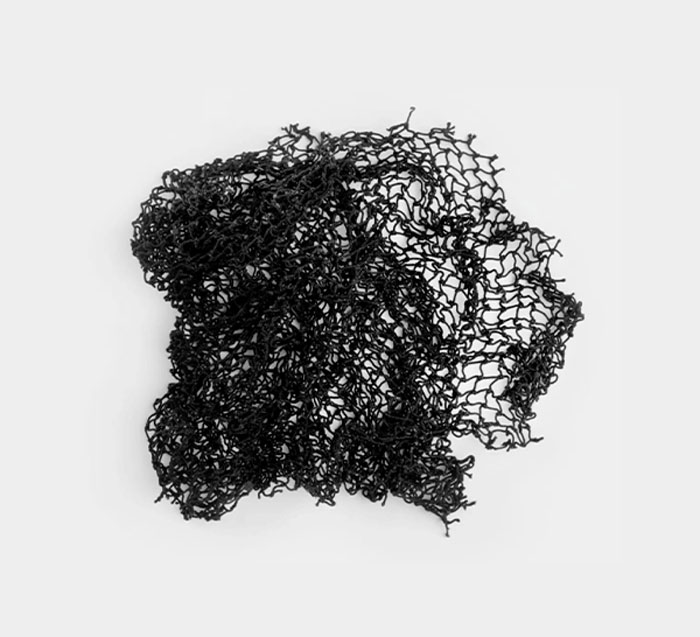
Material selection is extremely important, however as a sector, we are becoming increasingly aware that it’s not only the material that has to be sustainable, but that we must also ensure that we’re creating really healthy environments. Am I right that the Move chair is toxin and adhesive free?
I should mention that the seat shell is made of post-industrial recycled polypropylene. Polypropylene is a material that’s regarded as one of the safest plastics, it’s approved for use in food packaging storage applications, so it’s a relatively benign material without off-gassing issues. Nylon is widely used in carpets and clothing and is generally regarded as a stable and safe material.
The chair uses only mechanical fixings, there are no adhesives.
To recap!
Recycled Materials — uses waste stream + post-industrial recycled materials (avoids virgin materials)
Shipping Efficiency — ‘knock-down’ packaging in L-shaped box improves shipping efficiency
Lightweight — uses less material (and energy) for a low carbon footprint in production/delivery
Eco-wise — all of our packaging is made from eco-wise materials designed to be recyclable or compostable for the lowest environmental impact
Long Life — achieves world’s highest safety + durability standards with a long-lasting warranty.
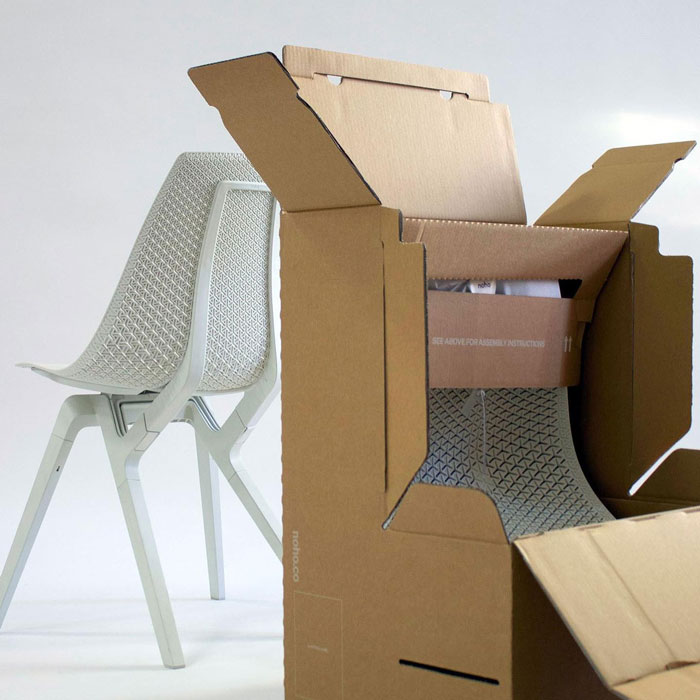
Now we have this slightly tricky question. Noho Move is extremely sustainable, but it is designed and manufactured in New Zealand and then shipped to the UK. How have you addressed shipping as part of the sustainability of the chair?
This is something we’re conscious of. When we first looked at the carbon footprint of the materials and the shipping, by sticking with sea freighting it actually reduces that somewhat. We also designed really space efficient packaging, which enables us to fit 550 chairs in a 40 foot container by sea freight, weighing eight and a half tons. Obolife are ordering chairs only by full containers.
The CO2 footprint of shipping that from New Zealand to the UK is around 1.2 tons of CO2, which is 2.3 kgs each chair, and that’s 11% of what we save in the choice of recycled materials versus virgin material.
In New Zealand we benefit from being close to our manufacturing and we have the benefit of New Zealand’s energy system being 82% from renewable sources which is predominantly hydroelectricity, wind power, solar and geothermal.
I think that our readers would really appreciate knowing the level you’ve gone to to address sustainability and to answer a question that may appear on the surface to be trickier but actually is something that you really have thought about.

Before we finish our conversation today, what have I missed? What do our readers still need to know about the Noho Move chair?
I think to us it seemed pretty obvious that a lot of the expertise and design response to the issues of healthier seating have been focused around the desk and very little happening with the table. So we were trying to bring healthy movement to the table and start a trend towards healthier table sitting, which is occupying more and more of our time and seating health issues are becoming more and more of a burden.
As designers the best thing you could do for the environment is to not create a product at all. If you feel you can create a product that’s fundamentally better for people, then it should be done in the kindest way for the environment.
Noho is a certified B Corp, which means that enshrined in our decision making and our processes is consideration for our purpose, which is healthier seating for people, for their physiology and how they work, but also reducing our environmental impact as much as possible.
I think it’s really exciting to have the Move Chair come to the UK and to be able to hear about all the thought and the attention to detail that’s gone into the design and manufacture of it, thank you. I also think that our readers would be really interested to know more about your healthy seating concept and your presentation. And I think that’s something we should come back to and talk about on its own as another conversation, if that’s something that you might be interested in.
Yes, I’d be very happy to do that!
Creating the conditions that support wellbeing: As passionate advocates of healthy workplaces for the body and mind, obo focus on creating holistic workplace experiences. obo fully support their clients in considering not only the immediate needs of their business, but also the long term needs of their staff.




